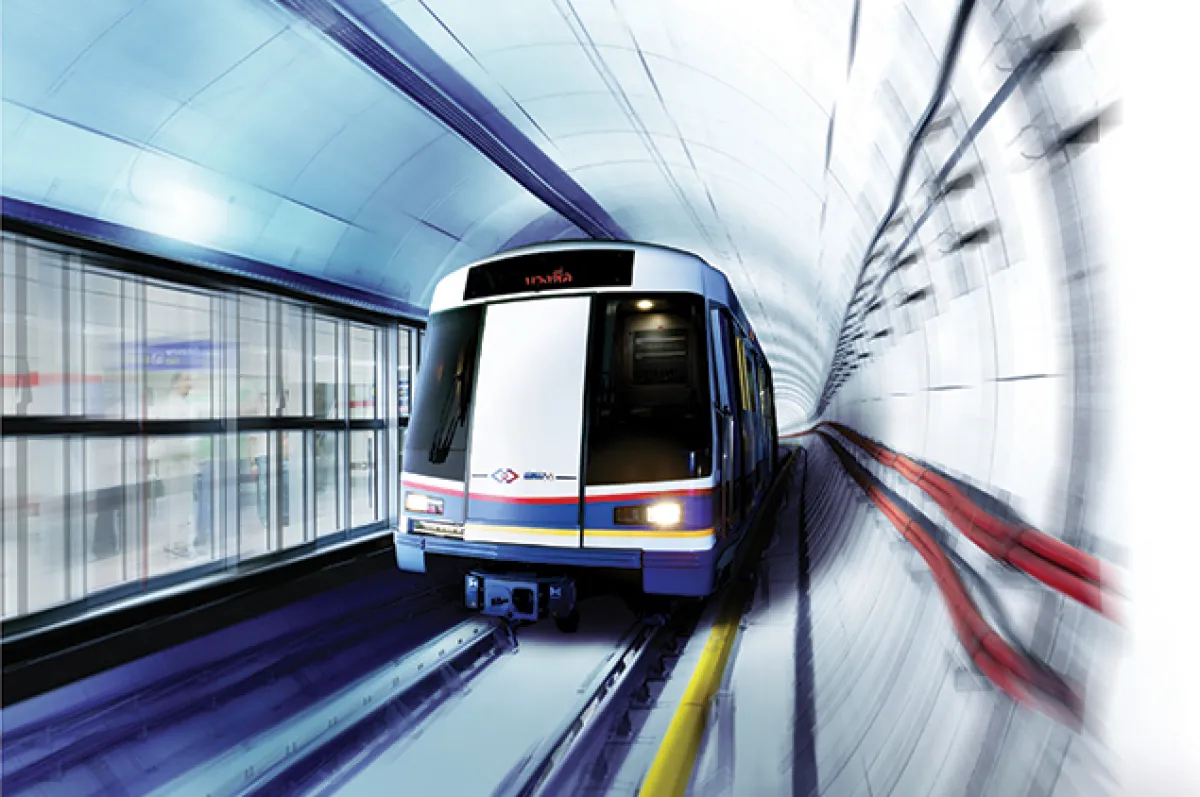
The four most beautiful pieces of architecture at MRT stations in Bangkok
Traveling in Thailand, besides wondering at the beauty of nature in each province, tourists find that its arts, culture, and Thai people's way of life are a large part of the attraction they feel.
While getting around town by public transport in Bangkok, which is convenient and fast without traffic congestion, travelers will also enjoy the beauty of the outstanding and unique architecture of some of the MRT train stations.
Today, we will introduce you to the four most beautiful examples of architecture at MRT Stations in Thailand, located in the heart of Bangkok.
1. Wat Mangkorn Station is located on Charoen Krung Road, where it intersects with Phlapphlachai Road and Plaeng Nam Road. The interior is decorated to blend in with its surroundings, with a combination of Chinese and European architecture that reflects the Chinese community in Chinatown. The distinctive identity of this station's interior is the dragon and lotus patterns that decorate the corridor wall and the ceiling, fitting the name Wat Mangkon Kamalawat.
2. Sam Yot Station is an underground station located on Charoen Krung Road Close to Sam Yot Intersection. The beautiful interior was designed by the Rattanakosin Committee to portray the architecture in the King Rama V era, together with Chinese-Portuguese or Sino-Portuguese architecture, as well as the construction of the station’s three entrance buildings.
All three buildings are designed to be spacious and airy to allow full exposure to the outside breeze. The entrance to the station and the surrounding walls are plastered and have folding doors. The shapes and characteristics of the Sam Yot Arch are decorated around the station pillars and the ticket sales area to convey the history of the community. Inside the station, pictures of old times are attached to the walls to tell the story of the history and origin of the community for passengers.
The station is also unique with its ticketing floor on the ground level. When passengers enter the station, they will immediately meet the automatic ticket vending machine and the ticket office without going underground first, the way they do in other stations. This sets Sam Yot Station apart from the others.
3. Sanam Chai Station, “Rattanakosin Island Tourist Gateway,” is located below Sanam Chai Road, close to Wat Phra Chetuphon Wimonmangkalaram, Wat Ratchabophit School, Museum Siam. It was designed by Assoc. Prof. Dr. Pinyo Suwankhiri, a National Artist.
In addition, Sanam Chai Station also has Thailand's first underground exhibition or Site Museum located inside the station to tell passengers the history of the community around Sanam Chai Station from the past to the present.
4. Itsaraphap Station is the first and only underground station located on the Thonburi side. It is also the last underground station of the Blue Line Project, before the railway becomes elevated at Tha Phra Station. The interior design of the station incorporates the image of a swan, which is an auspicious and sacred animal and a symbol of Wat Hong Rattanaram Ratchaworawihan, an ancient temple built in the Ayutthaya period; the design is adapted to convey the history of the nearby places. Wat Hong Rattanaram is located near Itsaraphap Station, accessible by Exits 1 and 2 and only 600 meters away.
The tunnel under the Chao Phraya River that connects Sanam Chai Station to Itsaraphap Station has to go down 38 meters at its deepest level, while the Chao Phraya River has an average depth of about 20 meters.